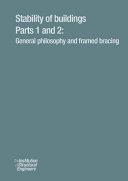
Tauhid
Hadis-Hadis Tematis Tentang Akidah (1)
Kebesaran dan keagungan Syekh Shaduq, menjadikan pemimpin kota Rey, yakni Rukn al-Dawlah al-Dailami meminta Syekh Shaduq untuk menetap di Rey dan menjadi pemimpin para pengikut Syi’ah. Akhirnya ia pun tinggal di Rey hingga wafatnya pada tahun 381 H. Syekh Shaduq hidup ketika masyarakat Syi’ah secara umum memiliki kebebasan yang relatif luas sehingga ia dapat mengadakan kunjungan ke berbagai daerah dengan leluasa dalam rangka menyebarkan ajaran-ajaran Ahlulbait as dan meluruskan segala isu miring tentang Syi’ah yang berkembang di tengah-tengah masyarakat saat itu. Untuk itu, Syekh Shaduq menulis sebuah sebuah buku yang diberi judul Al-I’tiqadat. Kitab ini memerikan dengan jernih tentang keyakinan-keyakinan Syi’ah. Misalnya tuduhan tentang tahrif al-Quran, Syekh Shaduq dalam kitabnya Al- I’tiqadat halaman 83-84 membantah dengan tegas hal ini dan menjelaskan: “Keyakinan kami tentang al-Quran, adalah Kalam Allah, wahyu-Nya, frman dan kitab suci-Nya. Ia tidak didatangi kebatilan dari depan maupun belakang. Ia diturunkan dari Zat Yang Mahabijak dan Maha Mengetahui. Ia mengandung kisah-kisah yang benar, ucapan pemutus, dan bukan senda gurau… Sungguh, keyakinan kami bahwa al-Quran yang diturunkan Allah kepada Nabi-Nya, Muhammad saw adalah apa yang termuat di antara dua sampul (mushaf ) yang sekarang beredar di tengah-tengah manusia. Tidak lebih dari itu. Jumlah surahnya adalah 114 surah… Dan barang siapa menisbahkan kepada kami bahwa kami meyakini al-Quran lebih dari itu, maka ia adalah pendusta.” Pendapat Syekh Shaduq ini merupakan pedapat muktabar Syi’ah hingga saat ini. Hal itu diterangkan lebih jauh oleh murid-murid beliau kelak. Sebagai orang yang memiliki kualitas keilmuan dan akhlak yang mulia, maka banyaklah orang yang menimba ilmu darinya. Di antara murid-murid Syekh Shaduq kemudian menjadi ulama-ulama papan atas dalam mazhab Ahlulbait adalah Syekh Mufd, Muhammad bin Muhammad bin Nu’man, Husain bin Abdillah, Harun bin Musa al-Tal’akburi, Husain bin Ali bin Babawaih al-Qommi, Hasan bin Husain bin Babawaih al-Qommi, Hasan bin Muhammad al-Qommi (pengarang kitab Tarikh-e Qom, sejarah kota Qom), Ali bin Ahmad bin Abbas al-Najasyi yang merupakan ayah penulis kitab Rijal al-Najasyi, dan Sayid Murtadha Alamul Huda yang merupakan penulis banyak buku dan ulama besar Syi’ah di zamannya
- ISBN 13 : 6023060560
- ISBN 10 : 9786023060566
- Judul : Tauhid
- Sub Judul : Hadis-Hadis Tematis Tentang Akidah (1)
- Pengarang : Syekh Shaduq (Abu Ja’far Muhammad bin Ali bin Husain bin Babawaih al-Qommi),
- Kategori : Religion
- Penerbit : Nur alhuda
- Bahasa : id
- Tahun : 2016
- Halaman : 436
- Google Book : https://play.google.com/store/books/details?id=j6XODwAAQBAJ&source=gbs_api
-
Ketersediaan :
Kebesaran dan keagungan Syekh Shaduq, menjadikan pemimpin kota Rey, yakni Rukn al-Dawlah al-Dailami meminta Syekh Shaduq untuk menetap di Rey dan menjadi pemimpin para pengikut Syi’ah.








